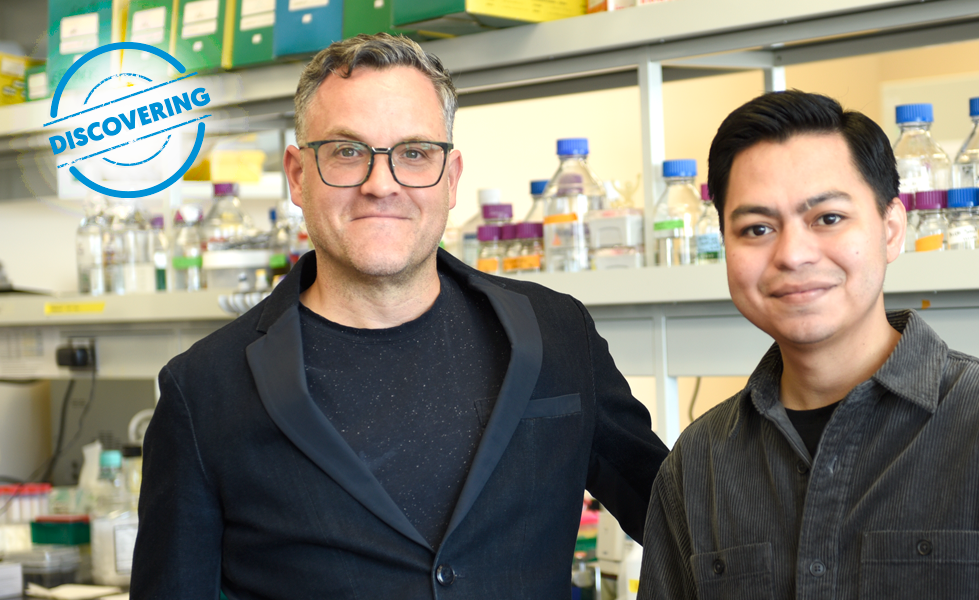
New research uncovers how enzymes shape the messages cells send each other
Important innovative research from the laboratory of Dr. Eric Lécuyer, Director of the RNA Biology Research Unit at the Montreal Clinical Research Institute (IRCM), just published in the scientific journal iScience, deepens our understanding of how cells exchange molecular information.
In brief
Cells constantly release tiny bubble-like structures called extracellular vesicles (EVs) that carry RNAs and proteins to neighboring or distant cells. These EVs act as couriers, influencing how recipient cells behave. This is an essential process in development, immunity, and cancer. While the important role of EVs in cellular communication has been established, how cells decide what to load into these EVs has been poorly understood.
Dr. Lécuyer’s team discovered that two enzymes, neutral (NSM) and acid sphingomyelinase (ASM), play very different roles in sorting cargo into EVs. Surprisingly, blocking ASM boosted the amount of RNA and RNA-binding proteins (RBPs) sent in EVs and even increased recipient cell migration and protein synthesis, while blocking NSM reduced these effects. These findings highlight endosome-derived EVs as key carriers of gene-regulatory molecules.
Why is this discovery important?
This study reveals how the molecular “packing list” of EVs is regulated by enzymes that act like quality-control inspectors. Since EVs can promote or suppress diseases such as cancer, understanding and manipulating their cargo could help scientists identify better biomarkers or treatments. By uncovering the distinct roles of NSM and ASM, this work lays the groundwork for strategies to selectively enhance or inhibit specific cellular messages — with potential therapeutic applications.
What comes next?
The team is now working to further unravel how the specific RNAs and proteins enriched in EVs influence recipient cells, and to explore whether this mechanism could one day be harnessed to control disease progression or support tissue repair.
A team effort to thank
This research was made possible through close collaboration with the IRCM’s Molecular Biology and Functional Genomics and Mass Spectrometry platforms, as well as the Facility for Electron Microscopy Research (FEMR) at McGill University. Funding was provided by the Canadian Institutes of Health Research (CIHR), the Natural Sciences and Engineering Research Council of Canada (NSERC), and the Fonds de recherche du Québec – Santé (FRQS).
Dr. Lécuyer is a distinguished research scholar of the FRQS and holds a dual FRQS research chair in AI and health. He is also a Full Professor, at the Department of Biochemistry and Molecular Medicine of the Université de Montréal. Dr. Juan-Carlos Padilla, lead author of the study, was supported by doctoral scholarships from FRQS, McGill University, and the IRCM.
Full article: https://www.cell.com/iscience/fulltext/S2589-0042(25)00701-1




